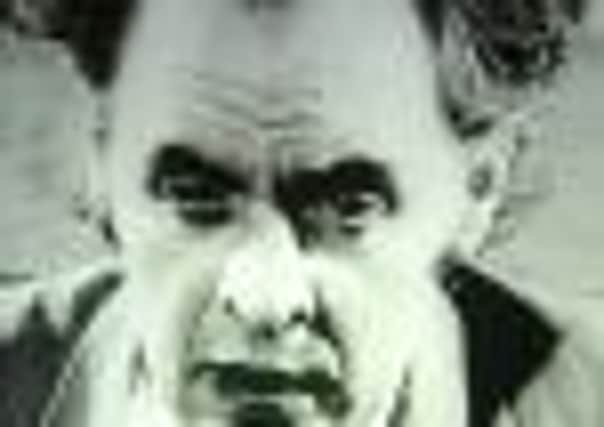Luke Fowler revisits the life of the Glasgow shaman in a new film


The artist presents us with a problem here. We all do know what was to happen to Laing. He would expire of a heart attack on a St Tropez tennis court at the premature age of 61.
And his legacy would falter somewhere between his brief brilliance as a prodigal psychiatrist who challenged a monolithic institution from within and his later career as an increasingly flabby-minded counter culture figure whose practical and emotional neglect would wreak havoc on his first wife and some of his ten children.
Advertisement
Hide AdThere is a decade between What You See Is What You Get, Fowler’s first short film about the maverick Glaswegian and this, his first feature, All Divided Selves, currently getting its UK premiere at Inverleith House.
In those ten years, the artist, who studied in Dundee before returning to his native Glasgow, has grown in stature as an important filmmaker, receiving the inaugural Derek Jarman Prize in 2008 and having a major show at the Serpentine Gallery in 2009.
What You See was a thrilling, disquieting look at Laing mainly through the prism of his Kingsley Hall experiment in creating a psychiatric community that subverted the usual lines between doctor and patient.
It seemed a film fuelled by youthful passion for a moment of radical experiment and historical possibility and, as Fowler later said, it was propelled by anger over his own tragic encounter with psychiatry through the illness and premature death of his own father.
All Divided Selves, like What You See, might be read on one level as a hagiography of Laing. In splicing together historical footage of the restless Laing in his roles as proselytiser, iconoclast, shaman, revolutionary, showman, satyr and good old-fashioned preacher, Fowler acknowledges his subject’s charismatic power.
But beneath all this thrums something more disconcerting and mature: a sense of darkness and loss, a kind of thicket of tangled emotion, and ultimately some kind of plea for familial love and reconciliation.
Advertisement
Hide AdIn trying to reimagine a better end for Laing’s time on the world stage (he was struck off by the GMC in 1987), Fowler must necessarily step outside chronology and narrative convention: the film employs not only a wealth of archive material but the artist’s own lyrical footage and the field recordings and recorded music of a number of musical collaborators. It shifts between Laing’s scripted films, contemporary film and TV footage and Fowler’s own stock.
Laing’s argument that schizophrenia was a form of “heartbreak” – an inevitable result of the “violence” of power structures within families and societies – is reflected in a filmic style that emphasises fragmentation and disorientation.
Advertisement
Hide AdVoices are interrupted, sentences unfinished, time and place disrupted by bucolic sounds and scenes. Fowler’s talking heads are rarely identified: from a terrifyingly old-school psychiatric consultant to the briefest glimpses of ageing patriarchs Freud and Jung. And he often uses visual metaphors, oblique ones at that, when exposition might do.
It would be easy to find fault with all of this if the film claimed to be documentary or an attempt to create a new historical record. Yet, as an emotional engagement with Laing’s legacy, All Divided Selves is a beautiful, flawed, yet ultimately worthwhile ride.
Dense undergrowth, sheep grazing on a Scottish hillside, and the dark rich texture of a tenement close, somehow illuminate both Laing’s theses and Fowler’s need to connect his ideas with his own lived life, like the flashes of polychromatic filters that occasionally punctuate the film. A steer being caught and branded at an American cattle fair, an insect trapped and listless in a tiny puddle, the mist descending over Coulport or the lights of Faslane are tiny essays in big ideas. Here is entrapment and labelling, loss, denial and the madness of the made world.
This is a sad but not a bleak film. Captured in the dense footage are images of Fowler’s friends and collaborators. Among them are his partner, his mother and the artist David Sherry playing in dappled sunshine with his own son. The darkness of family relationships that Laing first illuminated, only to replicate in his own misdeeds, is offset by Fowler’s own plea for love and optimism.
It’s also a love letter in parts to Glasgow: a city that Laing handled like a blunt instrument as a convenient metaphor for oppression and darkness. In Fowler’s hands it is rehabilitated as a place of intimacy, oddness and occasional grandeur.
In a sense this is a film about how and where any of us might find a place for love, freedom or comfort. For Fowler as an artist that is not only in filmmaking; his new work comes bookended by a series of “double frame” photographs he uses to record the minutiae of his own everyday life. There is also a major new work, Ridges On A Horizontal Plane, made in collaboration with the Japanese sound artist Toshiya Tsunoda.
Advertisement
Hide AdThe conjunction of all these is not entirely successful. The film should probably stand alone. This may be the final stage, one feels, of Fowler’s decade-long engagement with this subject. But then again, the story’s never over till its over.
Until 29 April